On the Road is a weekday feature spotlighting reader photo submissions.
From the exotic to the familiar, whether you’re traveling or in your own backyard, we would love to see the world through your eyes.
On the Road: Week of May 31 (5 am)
Albatrossity – Brazil 2013, part 4
frosty – Hot Springs National Park
?BillinGlendaleCA – In the Tank
frosty – Petrified Forest National Park
frosty – Joshua Tree National ParkThree more national parks with frosty this week!
Next week, we have 2 special Normandy submissions from lashonharangue on Monday and Tuesday, timed as closely as possible to June 6. Albatrossity, gracious as always, will move to Thursday just this once!
? And now, back to Albatrossity.
Albatrossity
Images for week 4 of the Brazil 2013 series – some mammals, no reptiles, no flowers, many birds!
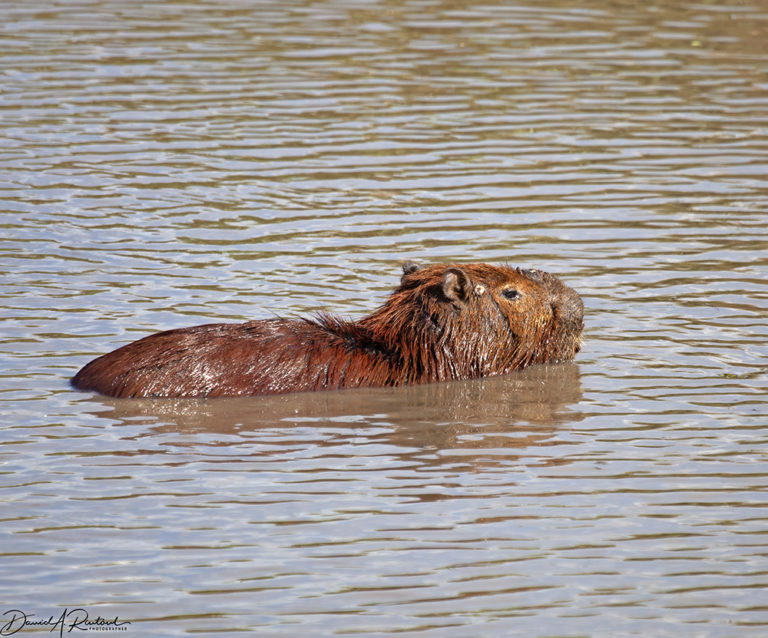
The largest (and sturdiest!) rodent in the world, the Capybara (Hydrochoerus hydrochaeris), is abundant and easy to see in the Pantanal. We saw them most often in the canals and lagoons, or lounging near the canals and lagoons. This one is taking a cool bath and keeping an eye out for the caimans!
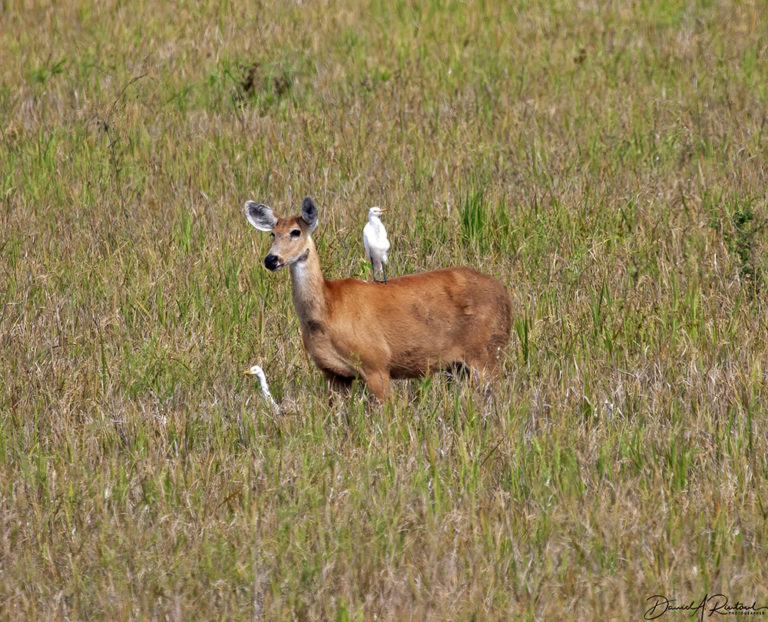
Marsh Deer (Blastocerus dichotomus) are also abundant in that part of Brazil. The former range of this species, which is the largest deer species in South America, included much of the continent, but that range is much reduced today. This one has recruited some Cattle Egrets (Bubulcus ibis, aka Garça-vaquiera)) to serve as lookouts.
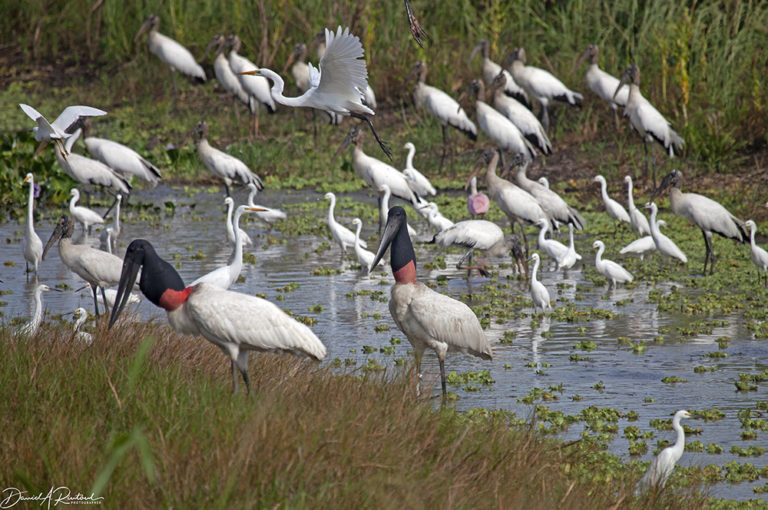
The Pantanal is a paradise for wading birds. This mixed flock contains Jabiru (Jabiru mycteria, aka Jaburu), Roseate Spoonbill (Ajaia ajaja, aka Colhereiro), Wood Stork (Mycteria americana, aka Cabeça-seca), Snowy Egret (Egretta thula, aka Garça-branca-pequena), and Great Egret (Ardea alba, aka Garça-branca-grande). The fishing must be good at this spot!
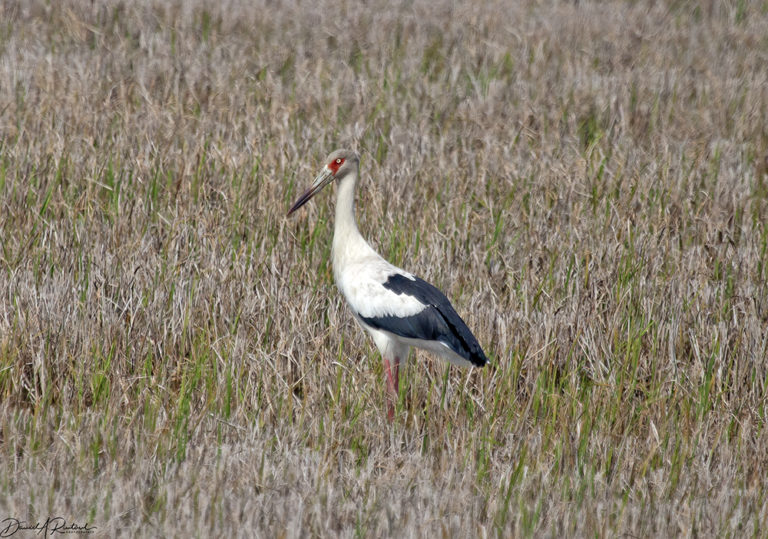
Other wading birds do not seem to join these mixed flocks. One of those is another stork, the Maguari (Cicona maguari, aka Maguari), an impressive but mostly solitary bird. We only saw a few of these, so I would look forward to seeing more.
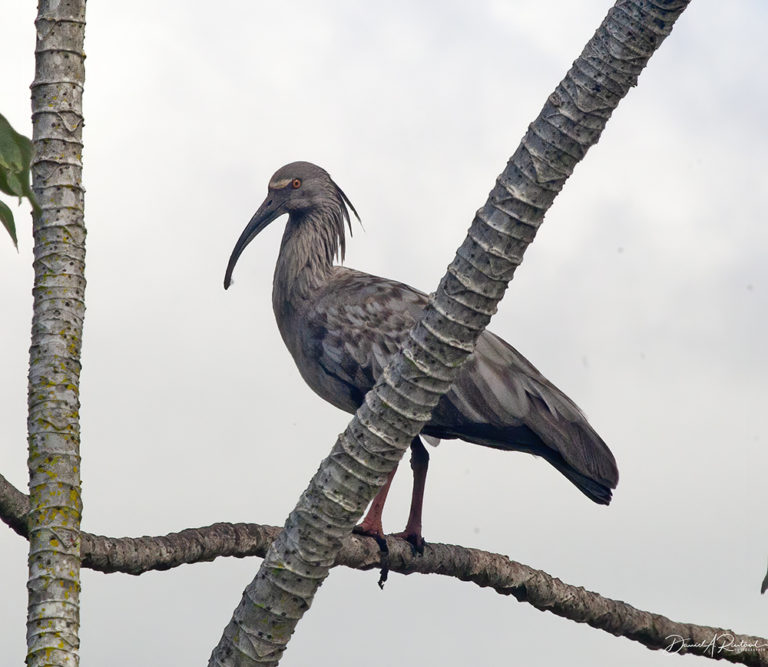
The Plumbeous Ibis (Theristicus caerulescens, aka Maçarico-real) is another antisocial wading bird of the region. They tend to avoid the lagoons and canals, feeding mostly in ephemeral ponds that are drying up. Unfortunately this one chose to pose with a largish tree-trunk between itself and the photographer. Another bird I would look forward to seeing again.
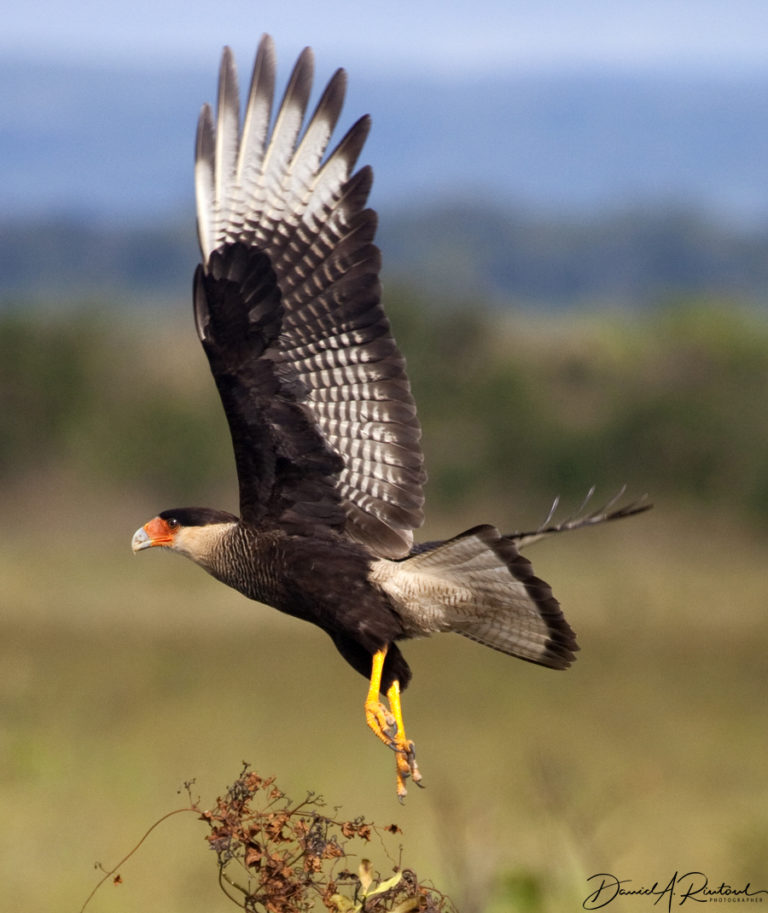
Raptors of the Pantanal include the Crested Caracara (Caracara plancus, aka Carcará). The taxonomy of this species has changed over the years; previously it was split from the caracara species that can be found in Florida and Texas. But nowadays the taxonomists, in their infinite wisdom, have lumped them together. Which may change again by this time next year…
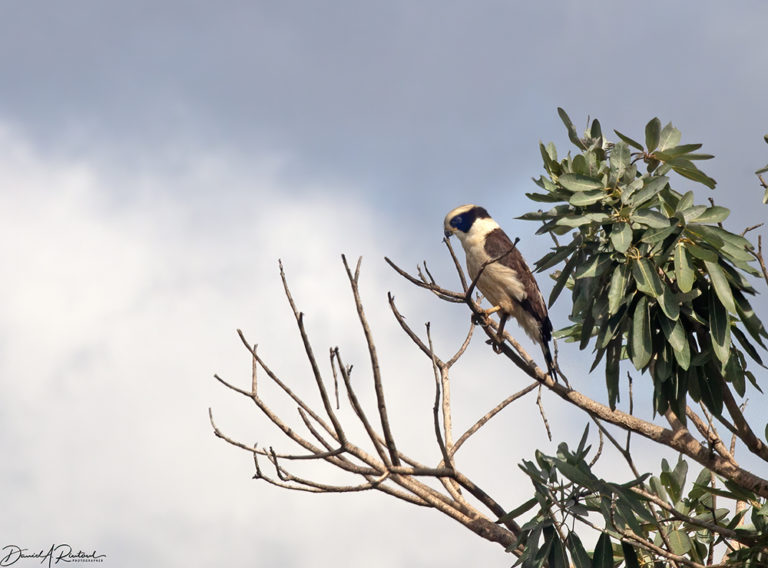
Another cool raptor, that I had not expected to see, is the Laughing Falcon (Herpetotheres cachinnans, aka Acauá). Instantly recognizable by the puffy head and black mask, these are snake-eating falcons. As is the case with the other falcons, the taxonomic revisions of the recent past have been difficult to follow, and currently it is classified in a different subfamily by the North American and South American taxonomic deities. Regardless of its familial affinities, it is a fine bird, and it was a treat to see one!
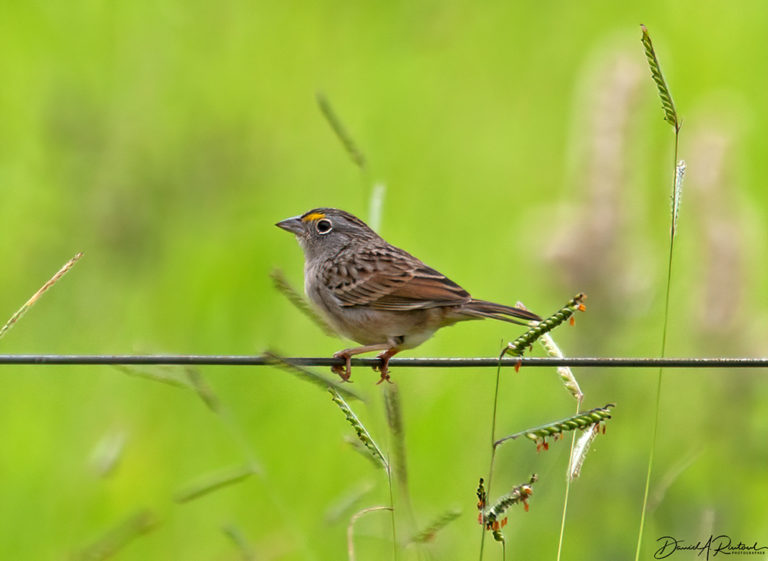
This is a Grassland Sparrow (Ammodramus humeralis, aka Tico-tico-do-campo). Behaviorally, vocally, and morphologically it seems to be almost identical to a North American species (Grasshopper Sparrow, Ammodramus savannarum), which is common in my part of Flyover Country. Hopefully the taxonomists won’t lump those two species, but if they did, it would be difficult to argue with that decision.
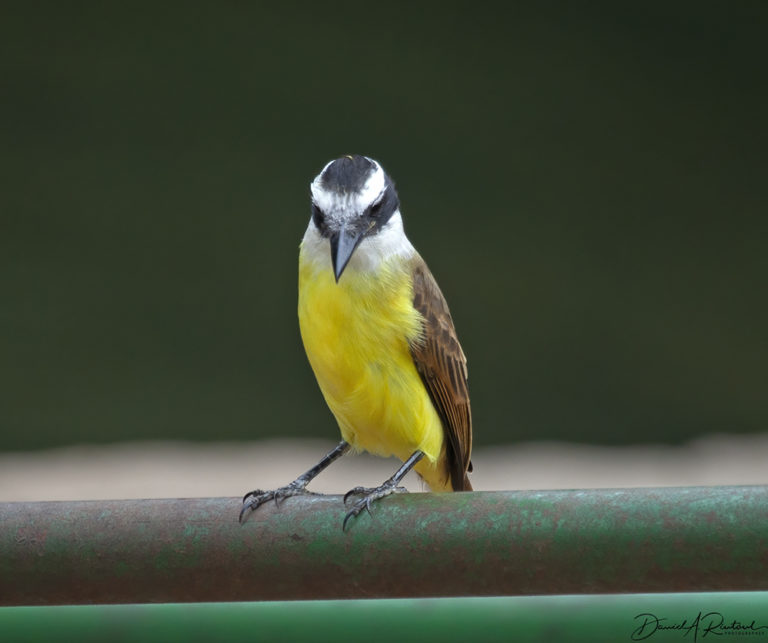
The small forested parts of the Pantanal host this flycatcher, the Lesser Kiskadee (Philohydor lictor, aka Bentevizinho-do-brejo). Other than size, it is almost identical to the Great Kiskadee (Pitangus sulphuratus, aka Bentevi), which can be found in the US in the RIo Grande Valley. Yet it is (currently!) the only species in the genus Philohydor, and the Great Kiskadee is the only species in the genus Pitangus. Go figure.
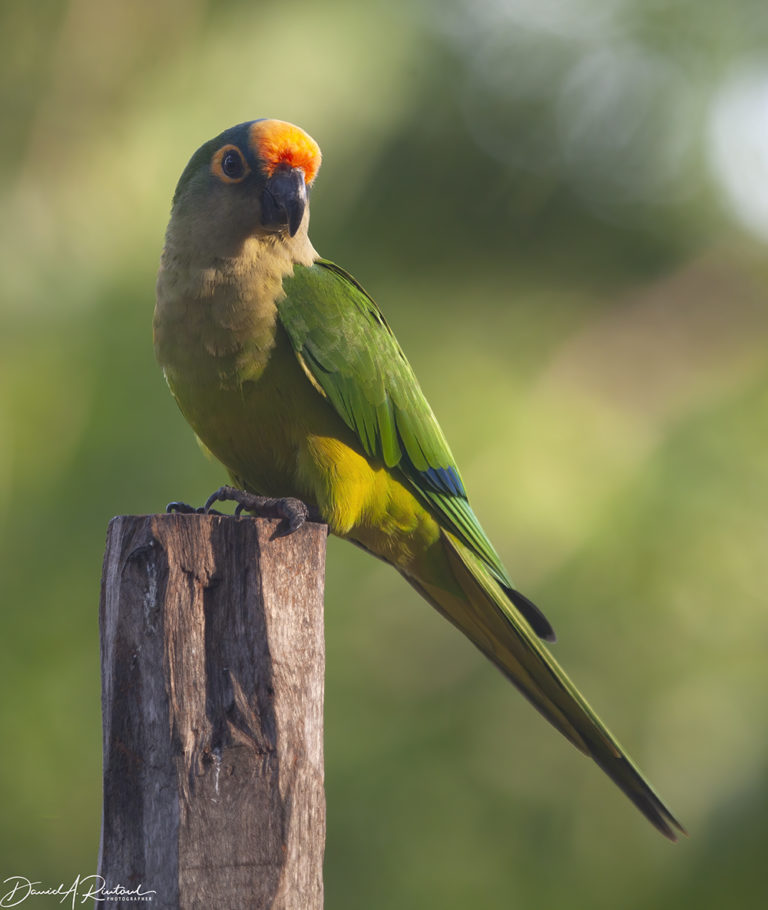
The final bird in this installment is the Peach-fronted Parakeet (Eupsittula aurea, aka Peach-fronted Conure, aka Periquito-rei). In parts of this region it is the most commonly encountered parakeet, and even lives in towns and villages. But it is not found in large flocks, only pairs for the most part, and has the interesting habit of nesting in the arboreal termite nests which are found throughout the region.

swiftfox
The BOU can stuff it. I say Solitary Vireo every time.
Rob
Great photos, especially of the sparrow.
sab
Wonderful photos, as always.
Imagine living in country with capybaras and ‘commonly encountered parakeets.’
Laura Too
What a treat! Thank you, all of these are beautiful.
Mike S (Now with a Democratic Congressperson!)
Great photos as always. Thanks for sharing!
JeanneT
I have never before had the feeling that I would like to visit Brazil!
Albatrossity
@JeanneT: Brazil is a lovely country, or at least the parts that I have seen are lovely. We avoided the giant cities like Sao Paulo and Rio de Janeiro, so that helps!
But right now I think I will wait a while before I travel there again. COVID-wise, Brazil is bad and still getting worse right now. Having Trump-lite as president has not worked out well for that country at all…
Mr. Prosser
Do taxonomists use DNA testing for genus and species? That would seem to solve the problem of who is related to whom.
Albatrossity
@Mr. Prosser: One would think so. But all of the recent revisions (and re-revisions) have been based on DNA sequences and the phylogenetic trees generated from those. The DNA sequence data are objective; different labs get the same sequence results. But the programs used to generate phylogenetic trees from those data can be different. And the sequences that are used are not entire genomes, but particular parts of the genome that are thought to be relevant. So a tree generated from say, mitochondrial sequences, can be different from a tree generated from nuclear gene sequences.
Layered on top of all of that are bigger questions – what level of sequence difference is enough to delineate two species, or two genera, or two families? Nobody can tell you an answer to those questions, or even if a family or genus-level split is the same in the plant or animal kingdom. There is a lot that is pretty arbitrary, not objective, even with sequence-based phylogenetic trees. At least that is how it seems to me.
Somebody once pointed out that if taxonomy was all settled, taxonomists would run out of things to do and papers to publish. I’m not saying that they generate new phylogenies just to keep their publication numbers up, but …
J R in WV
@Albatrossity:
Is there any way for a field biologist to get a dissertation approved without splitting out a few “new” species in whatever part of the animal kingdom they study? I think not!
And that’s why new species will continue to be split off of the commonly held older species. Oh, look, this frog has longer 2nd toes than that frog! YAY! I get to be a PhD!!!
ETA: And Thanks for the great bird photos, another in the series of great photo sets!!!
Albatrossity
@J R in WV: Lots of field biology doesn’t mess with the taxonomy of the subject species. But lots of field biologists have to keep up with the latest splits and lumps when they write that dissertation, for sure.
And frankly, it has been interesting to follow. In some cases the new taxonomic relationships reflect older taxonomies that had fallen out of favor; the DNA studies tell us that yes, those old guys who looked at morphology and behavior actually got a lot right. In other cases the new taxonomies are somewhat startling (Falcons are most closely related to parrots???), but make sense later when you look at the birds with that knowledge in your mind. A Merlin’s beak does indeed resemble a parrot beak when viewed from the proper angle!
JanieM
@Albatrossity: Something I’ve concluded from my occasional dabblings in family tree investigations: there’s no such thing as a “fact”…..
Great pictures as usual. I like the deer with the lookouts, not that it’s the nicest photo, but that it’s such a cool concept.